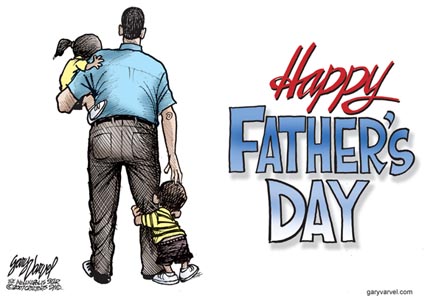Today,
June 16th is Bloom’s Day. JamesJoyce’s great novel Ulysses is set on
one day, June 16th, 1904. It
runs the course of a day in the life of Leopold Bloom, and therefore June 16th
has been dubbed Bloomsday. I don’t have
the time to really explicate the novel, so read the Wikipedia links. Suffice it to say that a rather ordinary,
mild mannered man, Leopold, is a stand in for the great ancient Greek legendary
hero, Odysseus, or referred to in Latin as Ulysses. So what we have is a sort of contraries: the
modern man as antihero as opposed to the ancient man as heroic.
Many
people across the world spend the entire Bloomsday celebrating and reading the
novel.
Here
is the opening paragraphs of the novel where two character, Buck Mulligan and
Stephan Dedalus share a flat and interact.
Mulligan is in the process of a morning shave, but twists the process to
parallel a Catholic Mass, which in effect becomes a black mass since at the heart
of Mulligan is a deep cynicism. “Kinch”
is Buck’s nickname for Stephan, and Stephan used to be a student under the Jesuits.
Stately, plump Buck Mulligan
came from the stairhead, bearing a bowl of lather on which a mirror and a razor
lay crossed. A yellow dressing gown, ungirdled, was sustained gently-behind him
by the mild morning air. He held the bowl aloft and intoned:
-- Introibo ad altare
Dei.
Halted, he peered down
the dark winding stairs and called up coarsely:
J-- Come up, Kinch. Come
up, you fearful Jesuit.
Solemnly he came forward
and mounted the round gunrest. He faced about and blessed gravely thrice the
tower, the surrounding country and the awaking mountains. Then, catching sight
of Stephen Dedalus, he bent towards him and made rapid crosses in the air,
gurgling in his throat and shaking his head. Stephen Dedalus, displeased and
sleepy, leaned his arms on the top of the staircase and looked coldly at the
shaking gurgling face that blessed him, equine in its length, and at the light
untonsured hair, grained and hued like pale oak.
Buck Mulligan peeped an
instant under the mirror and then covered the bowl smartly.
-- Back to barracks, he
said sternly.
He added in a preacher's
tone:
-- For this, O dearly
beloved, is the genuine Christine: body and soul and blood and ouns. Slow
music, please. Shut your eyes, gents. One moment. A little trouble about those
white corpuscles. Silence, all.
He peered sideways up and
gave a long low whistle of call, then paused awhile in rapt attention, his even
white teeth glistening here and there with gold points. Chrysostomos. Two
strong shrill whistles answered through the calm.
-- Thanks, old chap, he
cried briskly. That will do nicely. Switch off the current, will you?
He skipped off the
gunrest and looked gravely at his watcher, gathering about his legs the loose
folds of his gown. The plump shadowed face and sullen oval jowl recalled a
prelate, patron of arts in the middle ages. A pleasant smile broke quietly over
his lips.
-- The mockery of it, he
said gaily. Your absurd name, an ancient Greek.
He pointed his finger in
friendly jest and went over to the parapet, laughing to himself. Stephen
Dedalus stepped up, followed him wearily half way and sat down on the edge of
the gunrest, watching him still as he propped his mirror on the parapet, dipped
the brush in the bowl and lathered cheeks and neck.
Buck Mulligan's gay voice
went on.
-- My name is absurd too:
Malachi Mulligan, two dactyls. But it has a Hellenic ring, hasn't it? Tripping
and sunny like the buck himself. We must go to Athens. Will you come if I can
get the aunt to fork out twenty quid?
He laid the brush aside
and, laughing with delight, cried:
-- Will he come? The
jejune Jesuit.
Ceasing, he began to
shave with care.
-- Tell me, Mulligan,
Stephen said quietly.
-- Yes, my love?
-- How long is Haines
going to stay in this tower?
Buck Mulligan showed a
shaven cheek over his right shoulder.
-- God, isn't he
dreadful? he said frankly. A ponderous Saxon. He thinks you're not a gentleman.
God, these bloody English. Bursting with money and indigestion. Because he
comes from Oxford. You know, Dedalus; you have the real Oxford manner. He can't
make you out. O, my name for you is the best: Kinch, the knife-blade.
He shaved warily over his
chin.
-- He was raving all
night about a black panther, Stephen said. Where is his guncase?
-- A woful lunatic,
Mulligan said. Were you in a funk?
-- I was, Stephen said
with energy and growing fear. Out here in the dark with a man I don't know
raving and moaning to himself about shooting a black panther. You saved men
from drowning. I'm not a hero, however. If he stays on here I am off.
Buck Mulligan frowned at
the lather on his razorblade. He hopped down from his perch and began to search
his trouser pockets hastily.
-- Scutter, he cried
thickly.
He came over to the
gunrest and, thrusting a hand into Stephen's upper pocket, said:
-- Lend us a loan of your
noserag to wipe my razor.
Stephen suffered him to
pull out and hold up on show by its corner a dirty crumpled handkerchief. Buck
Mulligan wiped the razorblade neatly. Then, gazing over the handkerchief, he
said:
-- The bard's noserag. A
new art colour for our Irish poets: snotgreen. You can almost taste it, can't
you?
He mounted to the parapet
again and gazed out over Dublin bay, his fair oakpale hair stirring slightly.
-- God, he said quietly.
Isn't the sea what Algy calls it: a grey sweet mother? The snotgreen sea. The
scrotumtightening sea. Epi oinopa ponton. Ah, Dedalus, the Greeks. I must teach
you. You must read them in the original. Thalatta! Thalatta! She is our great
sweet mother. Come and look.
Stephen stood up and went
over to the parapet. Leaning on it he looked down on the water and on the
mailboat clearing the harbour mouth of Kingstown.
-- Our mighty mother,
Buck Mulligan said.


















